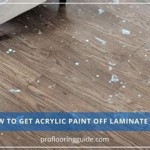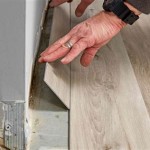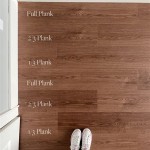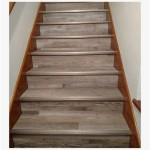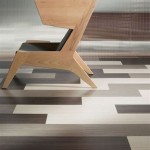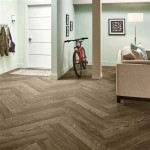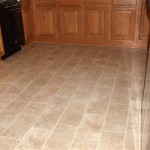Flooring Options for Wet Areas
Wet areas in homes, such as bathrooms, kitchens, and laundry rooms, require special flooring considerations due to their exposure to moisture. Choosing the right flooring for these spaces is essential to prevent water damage, mold growth, and slip-and-fall accidents. This article explores various flooring options suitable for wet areas, highlighting their benefits, drawbacks, and suitability for different applications.
Tile Flooring
Tile flooring remains a popular choice for wet areas due to its durability, water resistance, and aesthetic versatility. Ceramic and porcelain tiles are particularly suitable for bathrooms, kitchens, and mudrooms. These materials are impervious to water, making them resistant to stains and moisture damage. Tile flooring is also easy to clean and maintain, requiring only regular sweeping and mopping.
Furthermore, tile flooring offers a wide range of styles, colors, and patterns, allowing homeowners to create unique design schemes. From traditional subway tiles to modern geometric patterns, tile flooring can complement any décor. However, tile can be cold to the touch, and its hard surface can be uncomfortable for extended periods. Additionally, tile installation can be labor-intensive and expensive, requiring professional expertise for optimal results.
Natural Stone Flooring
For a touch of elegance and sophistication, natural stone flooring is an excellent option for wet areas. Marble, granite, slate, and limestone are known for their durability, water resistance, and unique beauty. Natural stone adds a touch of luxury to bathrooms, kitchens, and entryways, enhancing their aesthetic appeal. Its timeless elegance complements both traditional and modern design styles.
However, natural stone is more porous than tile, requiring sealing to prevent water absorption and staining. Regular maintenance is also crucial to preserve the stone's luster and prevent damage. Stone flooring can also be quite expensive and require professional installation, making its overall cost a significant factor to consider.
Luxury Vinyl Tile (LVP) and Luxury Vinyl Plank (LVP)
LVP and LVP have gained popularity due to their affordability, versatility, and durability. These flooring options mimic the look and feel of natural materials like wood, stone, and tile, offering a wide range of styles and colors. LVP and LVP are waterproof, making them ideal for high-moisture areas. Their water-resistant core prevents water damage and mold growth, ensuring a healthy and safe environment.
LVP and LVP are also relatively easy to install, offering a DIY-friendly option for homeowners. Their interlocking system simplifies installation and allows for quick and efficient replacement if needed. However, LVP and LVP may not be as durable as tile or natural stone, and they may require regular maintenance to maintain their appearance. Additionally, some LVP and LVP products may not be as scratch-resistant as other flooring options.
Engineered Hardwood Flooring
Engineered hardwood flooring is a durable option for wet areas, offering the beauty of solid hardwood with increased water resistance. It features a thin layer of hardwood veneer bonded to a plywood core, making it less susceptible to warping and moisture damage compared to solid hardwood. Engineered hardwood flooring is also relatively easy to maintain and can be refinished multiple times, extending its lifespan.
However, engineered hardwood flooring is not completely waterproof, requiring careful consideration of its installation and maintenance. It is essential to seal the flooring to prevent water penetration and to avoid excessive moisture exposure. Moreover, engineered hardwood flooring can be more expensive than other options, such as LVP and LVP.
Cork Flooring
Cork flooring is an eco-friendly and comfortable option for wet areas. It is naturally water-resistant, offering good moisture resistance and mold prevention. Cork is also a renewable resource, making it a sustainable choice for environmentally conscious homeowners. Its soft, cushioned surface provides comfort underfoot, making it an ideal choice for bathrooms and kitchens.
However, cork flooring is less durable than other options and may require more frequent maintenance to maintain its appearance. It is also susceptible to scratches and dents, requiring careful handling and proper cleaning practices. Cork flooring is often more expensive than other flooring options, such as LVP and LVP.
Epoxy Flooring
Epoxy flooring is a durable and highly water-resistant option for wet areas. It is a seamless, non-porous surface that is resistant to stains, chemicals, and wear and tear. Epoxy flooring is also easy to clean and maintain, making it a practical choice for high-traffic areas like kitchens, bathrooms, and laundry rooms.
Although epoxy flooring is a durable option, it can be difficult to install and may require professional expertise. It is also more expensive than other flooring options, such as LVP and LVP. Epoxy flooring may not be as aesthetically pleasing as other options, limiting its design versatility.
When choosing flooring for wet areas, it is crucial to consider factors such as budget, aesthetic preferences, durability, and maintenance requirements. Each flooring option has its unique advantages and disadvantages, and the best choice will depend on individual needs and preferences.

Types Of Floors For Wet Rooms The Complete Guide L Antic Colonial

Types Of Floors For Wet Rooms The Complete Guide L Antic Colonial

Best And Worst Flooring Choices For Wet Areas Refloor

Home Decorating Ideas Wood Look Tile In Wet Areas Daltile

Can I Install Vinyl Planks In Bathrooms Signature Flooring Floor Tiles

Best Flooring Options For Wet Rooms Homecall Carpets

Top 5 Flooring Options For Wet Areas Lavish Ceramics

Traffic Go Time With Free Primer Purchase Bona Get Classic Ux

Can You Have Vinyl Flooring In A Wet Room Wetroomstop Sieme Ltd
Best Worst Flooring For Wet Damp Areas
See Also
